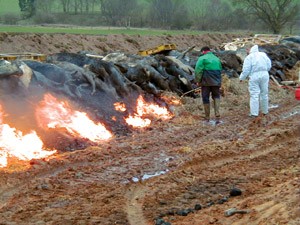I have been qualified for 16 years now, and all bar five months of that has been spent in small animal practice.

Back in my day, Glasgow was one of the few vet schools to give its students hands-on surgical experience on real live patients. We all left with a checklist of things we had done before graduating. Bitch spays were on that list, but mine was ruined by an ovarian ligature slipping off.
The resulting spurt of blood led to me being elbowed aside and a surgical resident grabbing the pedicle and ligating it. Then, with a glance over his shoulder at me and a grunt, he finished off the spay.
That was my introduction to one of the most horrible and nerve-wracking surgeries I think vets can undertake.
I ended up hating them. I would do them only every couple of weeks, and each one seemed different, and I had no real “magic routine” with them. While most surgeries can be reduced to a set movement of hands and instruments, bitch spays just wouldn’t play ball. It also didn’t help that I had managed to do way more spays in other mammals than in bitches by the time I moved from my first to my second job.
Then foot-and-mouth (FMD) came along in 2001 and I went along to help. I was very, very nervous being a “small animal vet” in that environment, but I soon started to smell of farms and I don’t think many people noticed or cared. Indeed I was in a little demand, being “untainted” by association with other farms.
In many ways that was a game-changer for me. The way it was run was that the vet on-site had to have final say in whether a group of lesions was FMD or not, often without ever having seen a case of it – and it’s not as obvious as you might think. Remember, this was a time before cameras on mobile phones were any good, so you were pretty much on your own when confronted with something that wasn’t quite a textbook case. Get it wrong and people suffered.

Being in an incredibly busy large-team environment, making tough calls, as well as eventually being trusted with “special” cases (ones that were a bit odd or particularly high-pressure) had a profound impact on me. To this day I still get “flashbacks” to particular incidents or realisations; something I didn’t have before FMD. Something – a sound, a smell, or a comment from someone – will trigger a particularly intense memory recall that will last for anything from a second to a few seconds.
I realised I have a lot more stamina than I thought: in some desperate situations we were working 16-20 hours and sleeping in cars; we could be working in baking heat in plastic overalls all day, sweat literally pouring out of our boots; or driving and navigating for hours at a time just to go see a couple of goats that happened to be at a market on the same day as some “interesting” sheep, only to be told they’d been sold weeks ago.
But one thing I only realised a few months after returning from this experience was that I had become a lot more confident in myself, in my ability, and in my diagnostic reasoning.
Being forced to make decisions of enormous weight, and living with the consequences (if I diagnosed a “hot” FMD case I’d be the one there for the days afterward supervising things) had changed me and given me the confidence to believe in myself and realise that my reasoning wasn’t so bad after all – and with that confidence came an improvement in bitch spays.
When the FMD work slowed down I returned to small animal work, and worked for a chap who gave me a tip that, along with confidence, improved things no end for me. It was “just use gut so thick you have to grunt when you tie it. Then you’ll know it’s tight enough!”
Since then I’ve been involved in large-scale neutering campaigns and have reduced my time from 45-60 minutes per spay down to 15-20, which I’m happy with. I know there are much faster people out there, but speed isn’t everything… especially with bitch spays!
If I’m looking for an underlying message or advice here, it’s “spend a little time out of your comfort zone”. Even in unrelated spheres, it will help a lot.

Leave a Reply